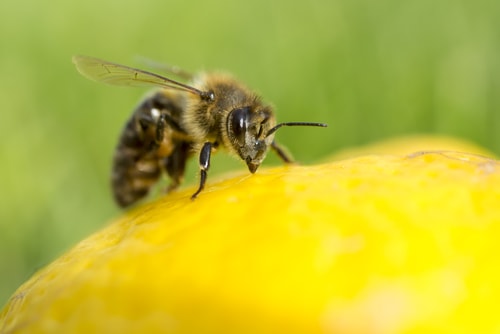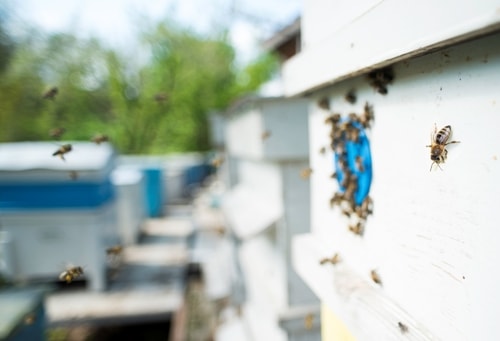Bee or wasp stings can induce a wide range of reactions, with varying levels of severity. Unfortunately, stings (for some people) can be life-threatening. If you suspect there is a hive near your home, don’t risk yourself or your family; call professional pest control services immediately.
Before you’re faced with a bee or wasp sting, read on to learn how stings can affect us and how to treat them.
Stinger Facts

“Bees can sting only once” is a common misconception. This is true only for honeybees. When a honeybee stings, it has a barbed stinger that gets stuck when stabbed into the skin, and continues pumping venom even after the bee has detached itself. Immediately remove the stinger with either tweezers or a card.
Other species, like the bumblebee (and all species of wasps) have smooth stingers that don’t get stuck, allowing them to sting multiple times. Seek medical help if you are attacked repeatedly by bees or wasps.
Mild Reactions
Most people will only experience a mild reaction with the following symptoms surrounding the affected area:
- Slight swelling
- Redness
- Sharp, burning pain
Traditional remedies:
- Ibuprofen or acetaminophen – can provide pain relief (consult a pharmacist or doctor about dosage)
- Anti-allergy medication/hydrocortisone cream – Allergy pills taken internally or hydrocortisone cream applied to the area (after washing with soap and water) can alleviate inflammation.
Natural remedies:

- Aloe vera – The anti-inflammatory properties of this plant’s gel can reduce pain and itching. Cut an aloe vera leaf and squeeze the gel on the sting site (or use bottled aloe vera gel).
- Apple cider vinegar – This substance can neutralize the acid found in bee venom. Soak a piece of cloth or a cotton ball in vinegar, and place it on the sting site for about 10 minutes.
- Baking soda – Add a little water to make a paste, place it on the affected area for about 10 minutes, then rinse with water. If needed, reapply after a few hours.
- Honey – Apply raw honey on the area for about an hour, then rinse with warm water. Its antibacterial properties will keep infection at bay. It’s also soothing and can relieve symptoms quickly.
- Ice – An ice pack placed over the affected area for about 20 minutes every hour can help numb the area and reduce swelling.
Most symptoms subside after a few hours or a few days. If they last longer, seek medical care.
Severe Allergic Reactions

Anaphylaxis and severe allergic reactions are rare, but they can be lethal. If these symptoms present themselves, get immediate medical attention:
- Hives
- Pale or flushed skin
- Severe itching
- Swollen face, tongue, and/or throat
- Wheezing and/or difficulty breathing
- Rapid pulse
- Nausea and vomiting
- Diarrhea
- Fainting or loss of consciousness
Treatment:
- Epinephrine – This is usually administered using an epinephrine auto-injector (“epi-pen”). Press it against the thigh (it can be injected through clothes), and hold for about 10 seconds. If you are severely allergic to stings, you must carry this device at all times.
- Antihistamine and cortisone – For emergency care, these medications are usually given intravenously. They reduce inflammation, making it easier to breathe.
If you can avoid bees and wasps, do. If you encounter one, do not anger it. Keep away from infested areas or use insect repellent when outdoors. If going near a hive is unavoidable, wear protective clothing. An infestation right in your backyard is cause for concern; leave insect and nest removal to the professionals.
If you need bees and wasps removed from Aurora, Vaughan, and other nearby property areas, JDM Pest Control is only a call away: (416) 729-3568.
